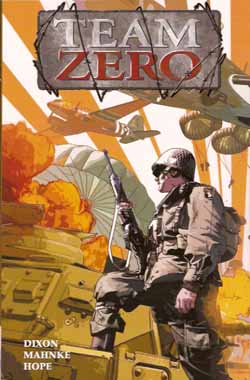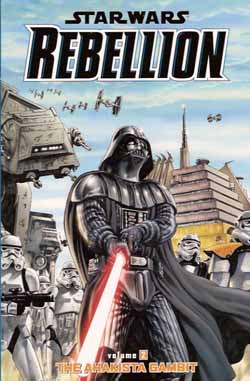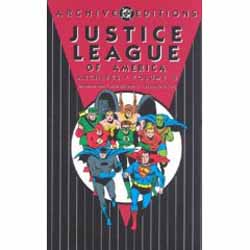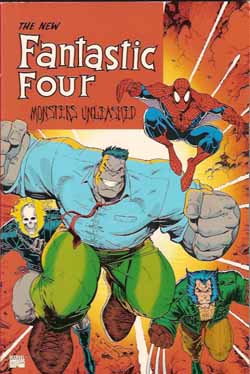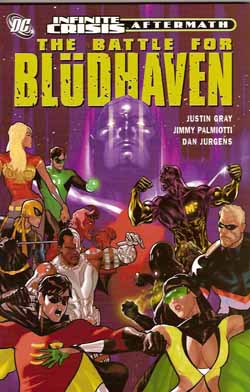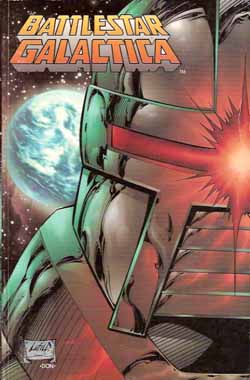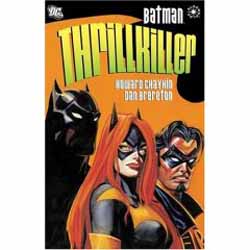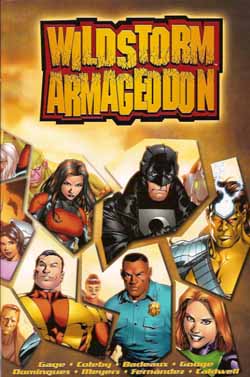(UK EDITION)
 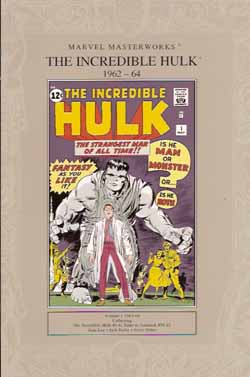
By Stan Lee, Jack Kirby, Dick Ayers, Steve Ditko & various (Marvel/Panini UK)
ISBN: 978-1-905239-89-4
Despite covering three years of publication this chronological compendium only collects The Incredible Hulk #1-6 and Tales to Astonish #59-62, since the Jekyll-and-Hyde Jade Giant was one of early Marvel’s rare failures – possibly because it so resembled an old-fashioned “monster-mag†in a market frantically re-embracing the Super-Hero concept.
After six bi-monthly issues the series was cancelled and Lee and Kirby retrenched, making the character a perennial guest-star in other Marvel titles (Fantastic Four #12, Amazing Spider-Man #14, The Avengers from #1, and so forth) until such time as they could restart the drama in their new “Split-Book†format in Tales To Astonish where Giant-Man was rapidly proving to be a character who had outlived his time.
Cover-dated May 1962 the first issue saw puny atomic scientist Bruce Banner, sequestered on a secret military base in the desert, perpetually bullied by the bombastic commander General “Thunderbolt†Ross as the clock counts down to the World’s first Gamma Bomb test. Besotted by Ross’s daughter Betty, Banner endures the General’s constant jibes as the clock ticks on and tension increases.
At the final moment he sees a teenager lollygagging at Ground Zero and frantically rushes to the site to drag the boy away. Unknown to him the assistant he’s entrusted to delay the countdown has an agenda of his own…
Rick Jones is a wayward but good-hearted kid. After initial resistance he lets himself be pushed into a safety trench, but just as Banner is about to join him The Bomb detonates…
Miraculously surviving the blast Banner and the boy – Rick Jones – are secured by soldiers but that evening as the sun sets the scientist undergoes a monstrous transformation. He grows larger; his skin turns a stony grey…
In six simple pages that’s how it all starts, and no matter what any number of TV or movie reworkings or comicbook retcons and psycho-babble re-evaluations would have you believe that’s still the best and most primal take on the origin. A good man, an unobtainable girl, a foolish kid, an unknown enemy and the horrible power of destructive science unchecked…
Written by Stan Lee, drawn by Jack Kirby with inking by Paul Reinman, ‘The Coming of the Hulk’ barrels along as the man-monster and Jones are kidnapped by Banner’s Soviet counterpart the Gargoyle for a rousing round of espionage and Commie-busting. In the second issue the plot concerns invading aliens, and the Banner/Jones relationship settles into a traumatic nightly ordeal as the scientist transforms and is locked into an escape-proof cell whilst the boy stands watch helplessly. Neither ever considers telling the government of their predicament… ‘The Terror of the Toad Men’ is formulaic but viscerally and visually captivating as Steve Ditko inks Kirby, imparting a genuinely eerie sense of unease to the artwork.
The third issue presents a departure in format as the longer, chaptered epic gave way to discrete complete short stories. Dick Ayers inked Kirby in the transitional ‘Banished to Outer Space’ which radically alters the relationship of Jones and the Hulk, the story so far is reprised in the three page vignette ‘The Origin of the Hulk’ and that Marvel mainstay of villainy the Circus of Crime debuts in ‘The Ringmaster’. The Hulk goes on an urban rampage in #4’s first tale ‘The Monster and the Machine’ and aliens and Commies combine with the second adventure ‘The Gladiator from Outer Space!’
The Incredible Hulk #5 is a joyous classic of Kirby action, introducing the immortal Tyrannus and his underworld empire in ‘The Beauty and the Beast!’ whilst those pesky commies are in for another drubbing when our Jolly Green freedom-fighter prevents the invasion of Llhasa in ‘The Hordes of General Fang!’
Despite the sheer verve and bravura of these simplistic classics – some of the greatest, most rewarding comics nonsense ever produced – the series was not doing well, and Kirby moved on to more profitable arenas. Steve Ditko handled all the art chores for the final issue, another full-length epic and an extremely engaging one. ‘The Incredible Hulk vs the Metal Master’ has superb action, sly and subtle sub-plots and a thinking man’s resolution, but nonetheless the title died with this sixth issue.
After shambling around the nascent Marvel universe for a year or so, usually as a misunderstood villain-cum-monster, the Emerald Behemoth got another shot. Giant-Man was the star feature of Tales to Astonish but by mid-1964 the strip was floundering. In issue #59 the Master of Many Sizes was tricked by an old foe into battling the man-monster in ‘Enter: The Hulk’ by Lee, Ayers and Reinman; a great big punch-up that set the scene for the next issue wherein his second series began.
‘The Incredible Hulk’ found Banner still working for General Ross, and still afflicted with uncontrollable transformations into a rampaging, if well-intentioned, engine of destruction. The ten page instalments were uncharacteristically set in the Arizona/New Mexico deserts, not New York and espionage and military themes were the narrative backdrop of these adventures.
Lee scripted, Ditko drew and comics veteran George Roussos – under the pseudonym George Bell – provided the ink art. The first tale concerned a spy who stole an unstoppable suit of armour, concluding in the next episode ‘Captured at Last’. The cliffhanger endings such as the Hulk’s imprisonment by Ross’s military units would be instrumental in keeping readers onboard and enthralled. The last tale in this volume ‘Enter… the Chameleon’ has plenty of action and suspense but the real stinger is the final panel that hints at the mastermind behind all the spying and skulduggery – the enigmatic Leader – who in another volume will show why he became the Hulk’s ultimate nemesis…
These early tales are fast-paced, classically simplistic comics-in-the-raw and a testament to the abilities of the creators who wouldn’t let the monster die, and this lovely collection is a fun-filled ticket to easier, boisterously enjoyable escapist entertainment. What could possibly top that?
© 1962, 1963, 1964, 2008 Marvel Characters, Inc. All Rights Reserved.
